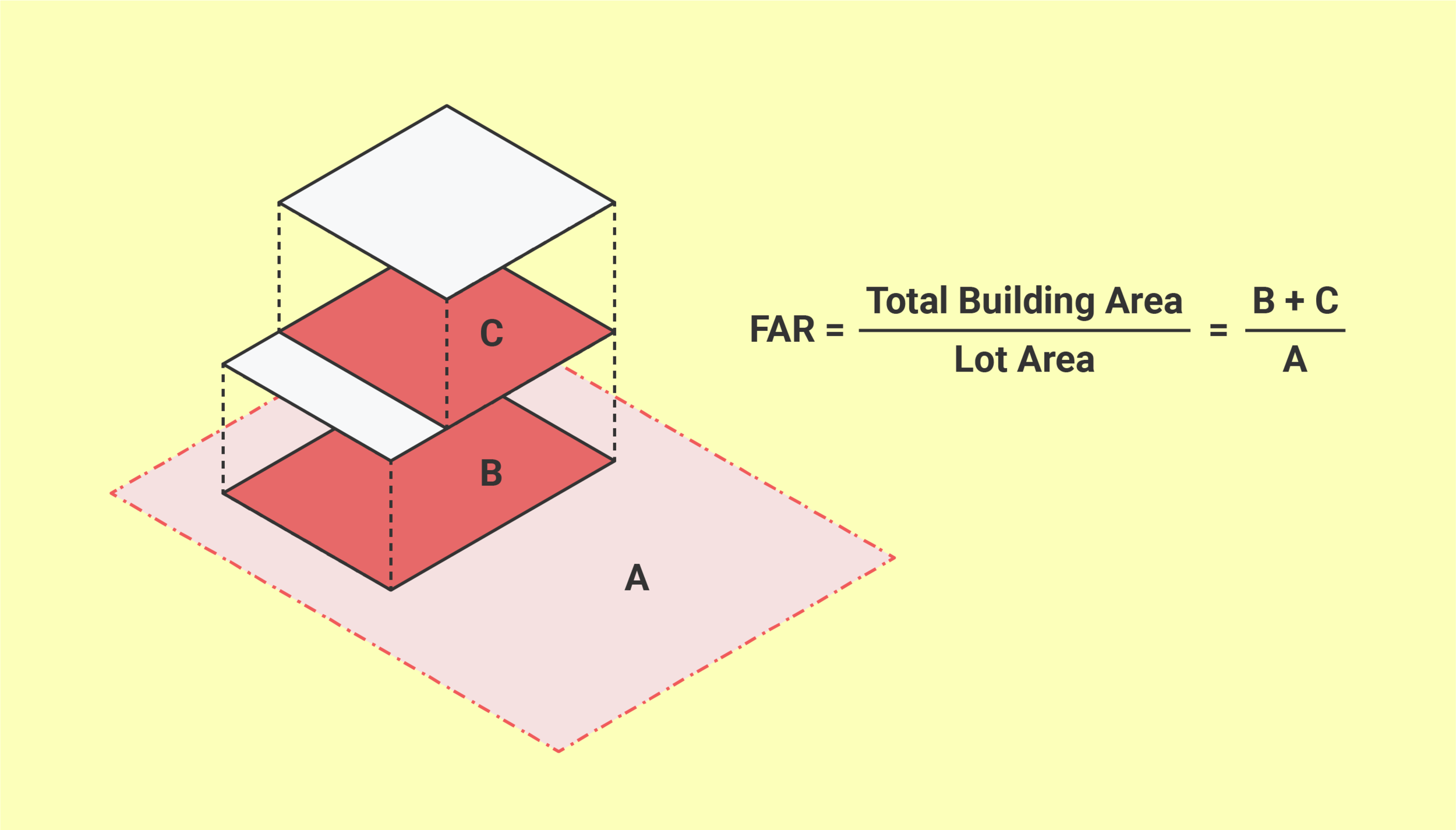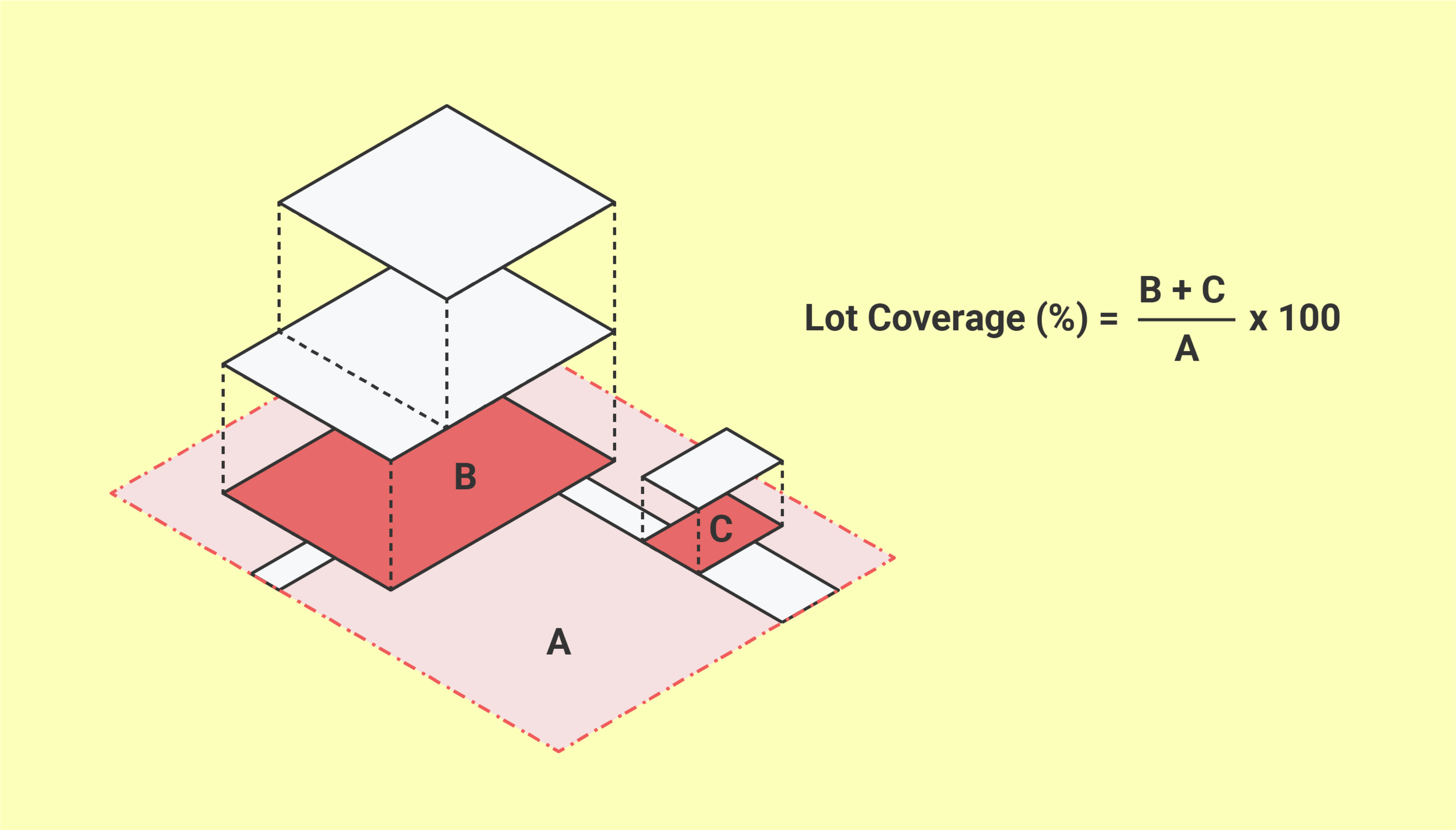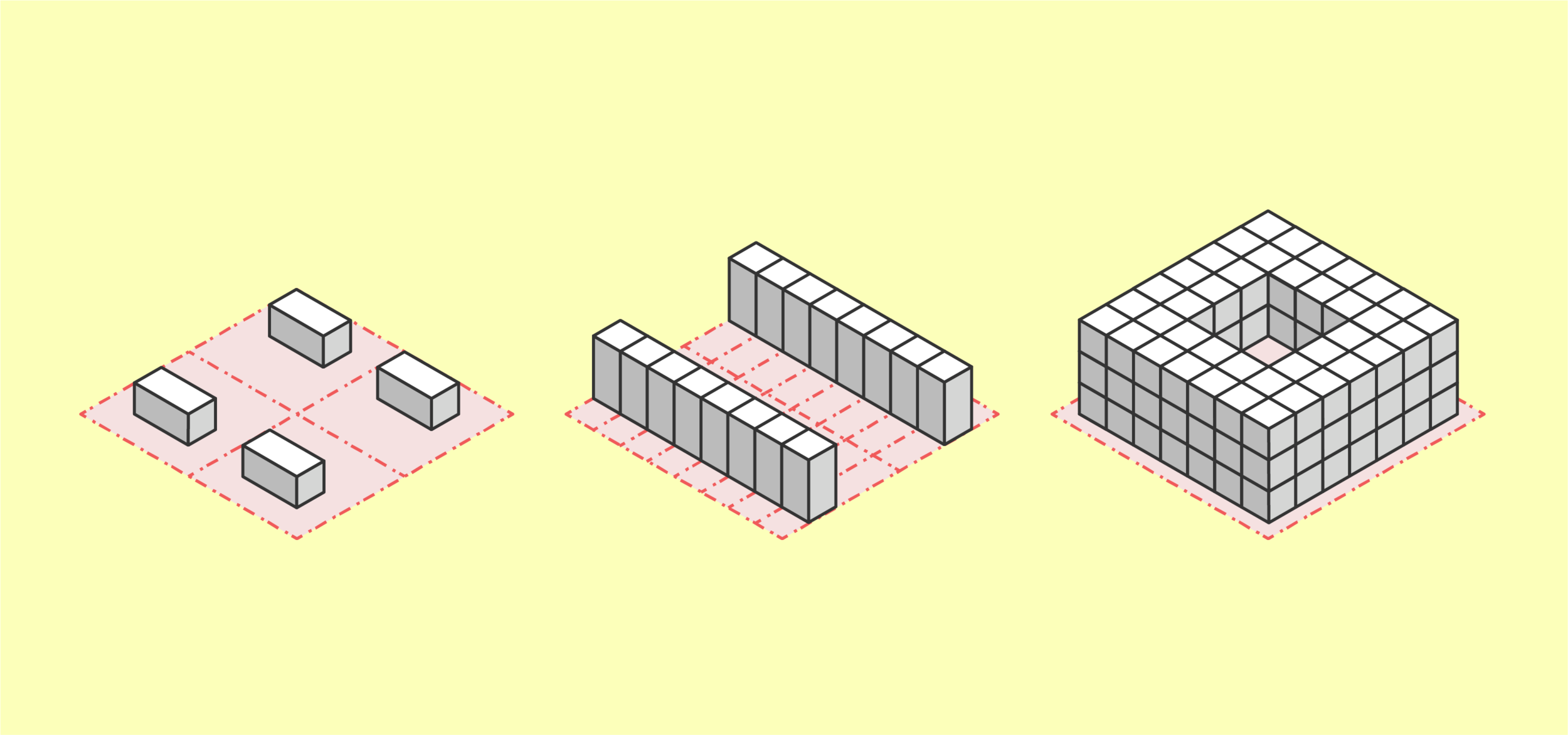Density regulations shape our cities. They designate how many people will live in a specific area, which has implications on quality of life issues, especially at the ends of the spectrum. These include air quality, access to public transit, walkability, etc.
There are multiple ways in which local governments control density. Below are the ones we implement as parameters in our software.
Floor Area Ratio (FAR)
FAR is a ratio calculated by dividing the total building floor area (conditioned space in all floors) by the lot area. You can meet the same FAR with multiple building configurations. The smaller your building footprint is, the taller your massing can be, while still maintaining the same FAR.
Lot Coverage
Lot Coverage is a percentage limit on the amount of a lot that may be covered by buildings, excluding decks, pools and trellises. It places a restraint on the size of the building footprint.
Residential Unit Density
Residential Unit Density is the maximum number of dwelling units allowed within a standard measure of land area, usually given as units per acre.
Hotel Unit Density
Hotel Unit Density is the maximum number of hotel keys allowed within a standard measure of land area, usually given as units per acre.








